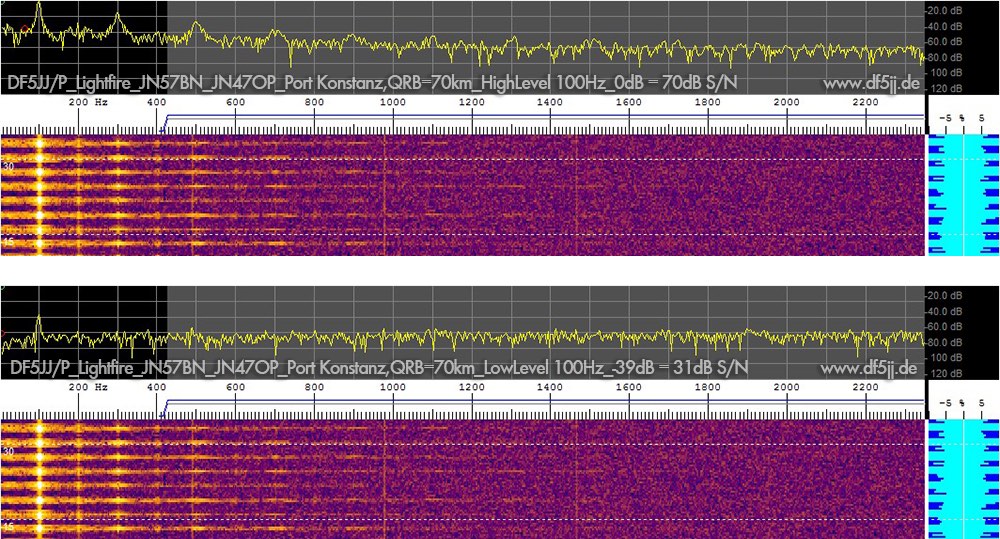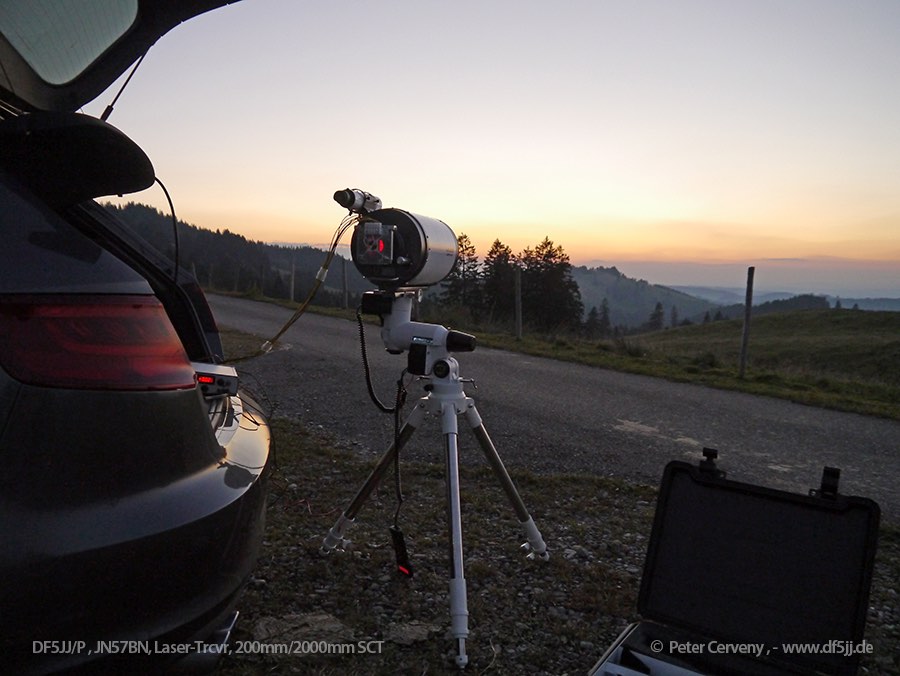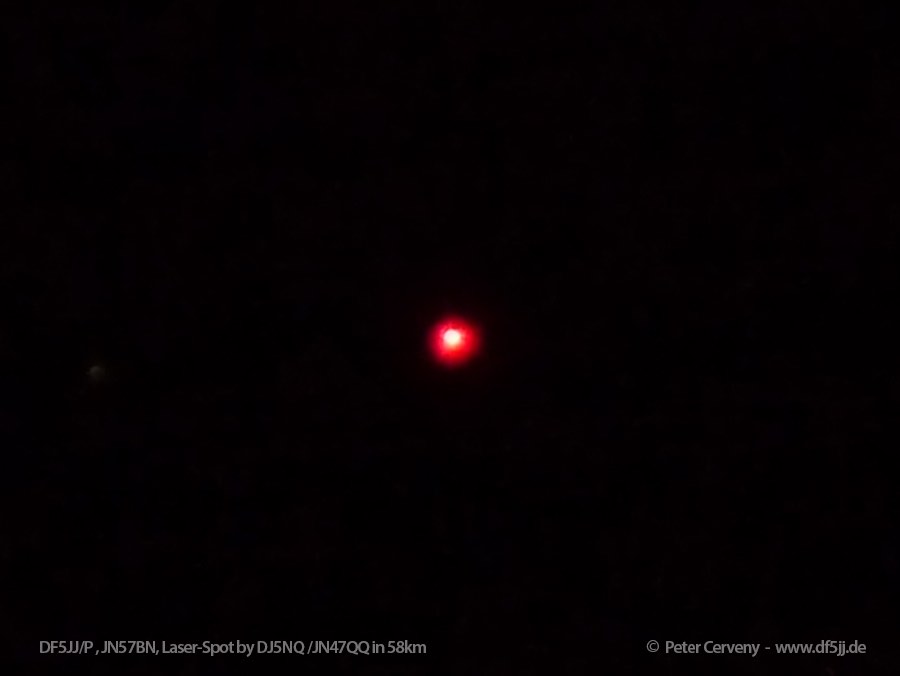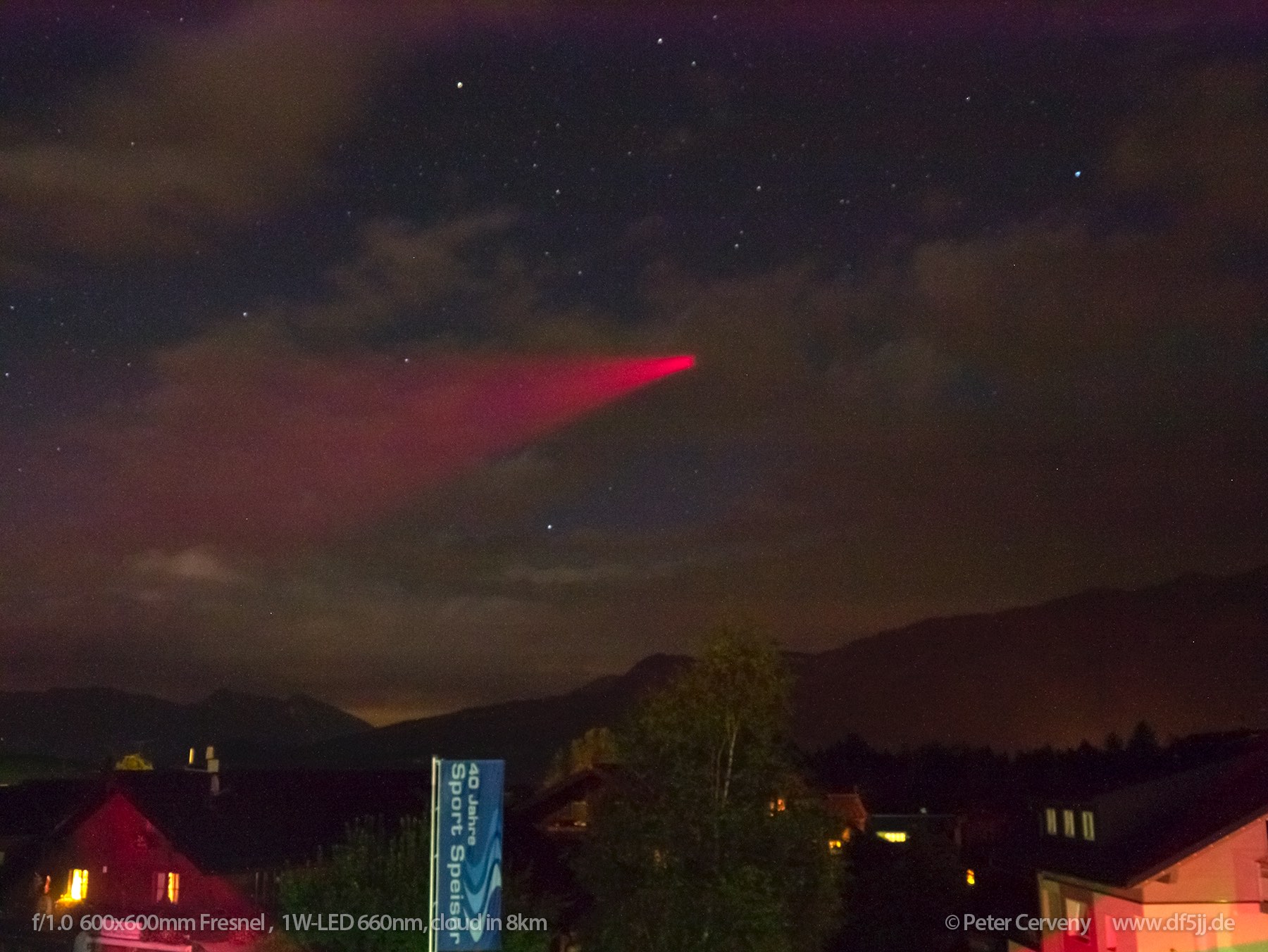First Laser Light Tests
(30. Sept. 2015)
DF5JJ, JN57BN, 1120m ASL
Test Antenna D=200mm F=2000mm Meade Schmidt-Cassegrain-Telescope
Meade LXD-75 Mount, QTF tracking accuracy 0.016°
TX: 660nm 3W out LED - 1W out eff. to 0.9° beamwidth
also QRV: 385nm/0.5W out LED 850nm/2.5W out LED
RX: BPW34B frontend (KA7OEI design)
RX/TX-Modes: AM,MCW,WSJT-X
DJ5NQ, JN47QQ, 450m ASL
TX: 50mW Laser 660nm
RX: failed (DF5JJ-LED was visible constantly)
After the QSO DF5JJ received the Port Constance lightfire (JN47OP18) with excellent S/N=70dB (100Hz-modulation of the bulb) over 69.5 km.
The full unmodulated photon current was much stronger!
 Spectrum analyses by Spectrum Lab Software
Spectrum analyses by Spectrum Lab Software
Port Constance lightfire audio file
Check the local webcams/weather maps for light path condx here on my website.
73 es see you on UV-VIS-IR
 Light-TRCVR with TX-head running
Light-TRCVR with TX-head running
 Laser spot of DJ5NQ/JN47QQ
Laser spot of DJ5NQ/JN47QQ
D=600mm F=600mm Fresnel lens
(>90% from 385-1100nm, >80% at 340nm, 50% at 290nm)
Cloud scatter test with LED-TX-head running 1W out (30%PWR)
The clouds reflect amber colour of Sodium lamps of the cities of the valley of Oberstdorf. The red beam appears wide in front of the fresnel due to the camera mounted only one meter off-axis of the 60cm-diameter parallel beam (LED 2x2mm square) and it ends in a visible square on the cloud. It was easy to set the focal lenght of the fresnel for sharpest spot on the cloud.
The distance of the dissolving Nimbostratus (NS) formations was about 8km.
The two bright stars on top are from Andromeda constellation.
 10.8.2016: Cloud scatter test with LED-TX-head 1W out
10.8.2016: Cloud scatter test with LED-TX-head 1W out
DF5JJ - JN57CN
Laser Test 532nm/200mW
© Peter Cerveny - DF5JJ
